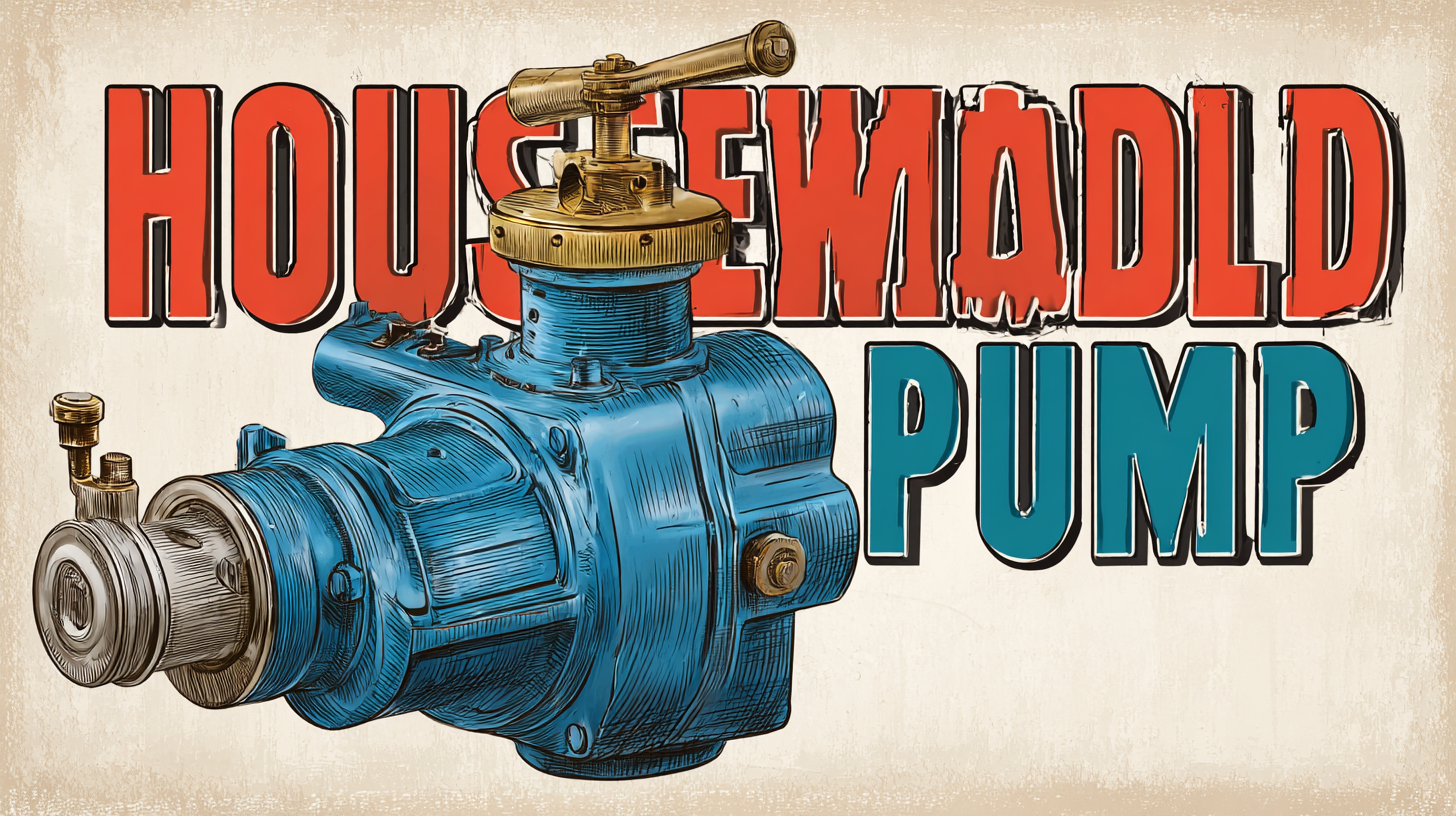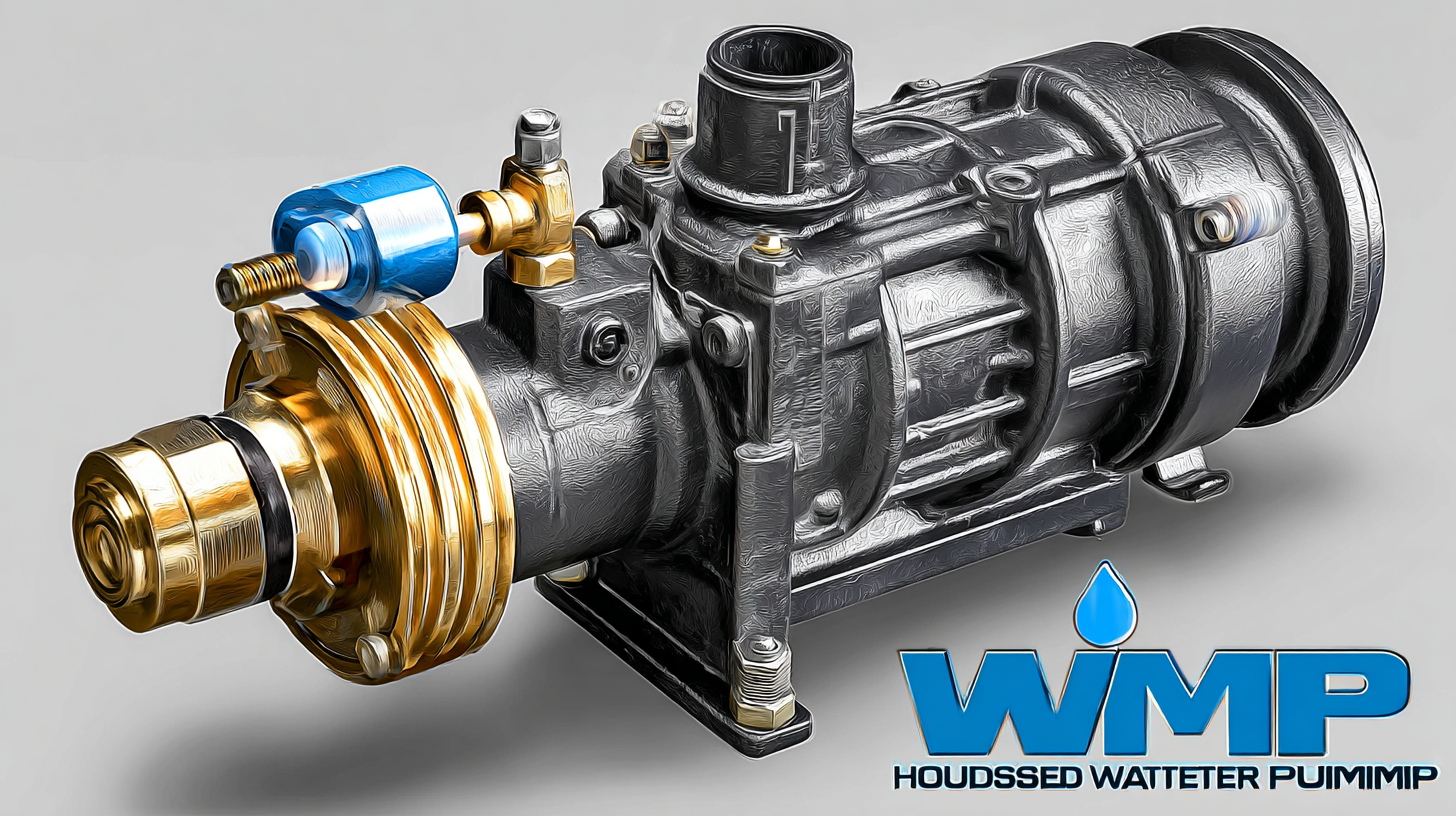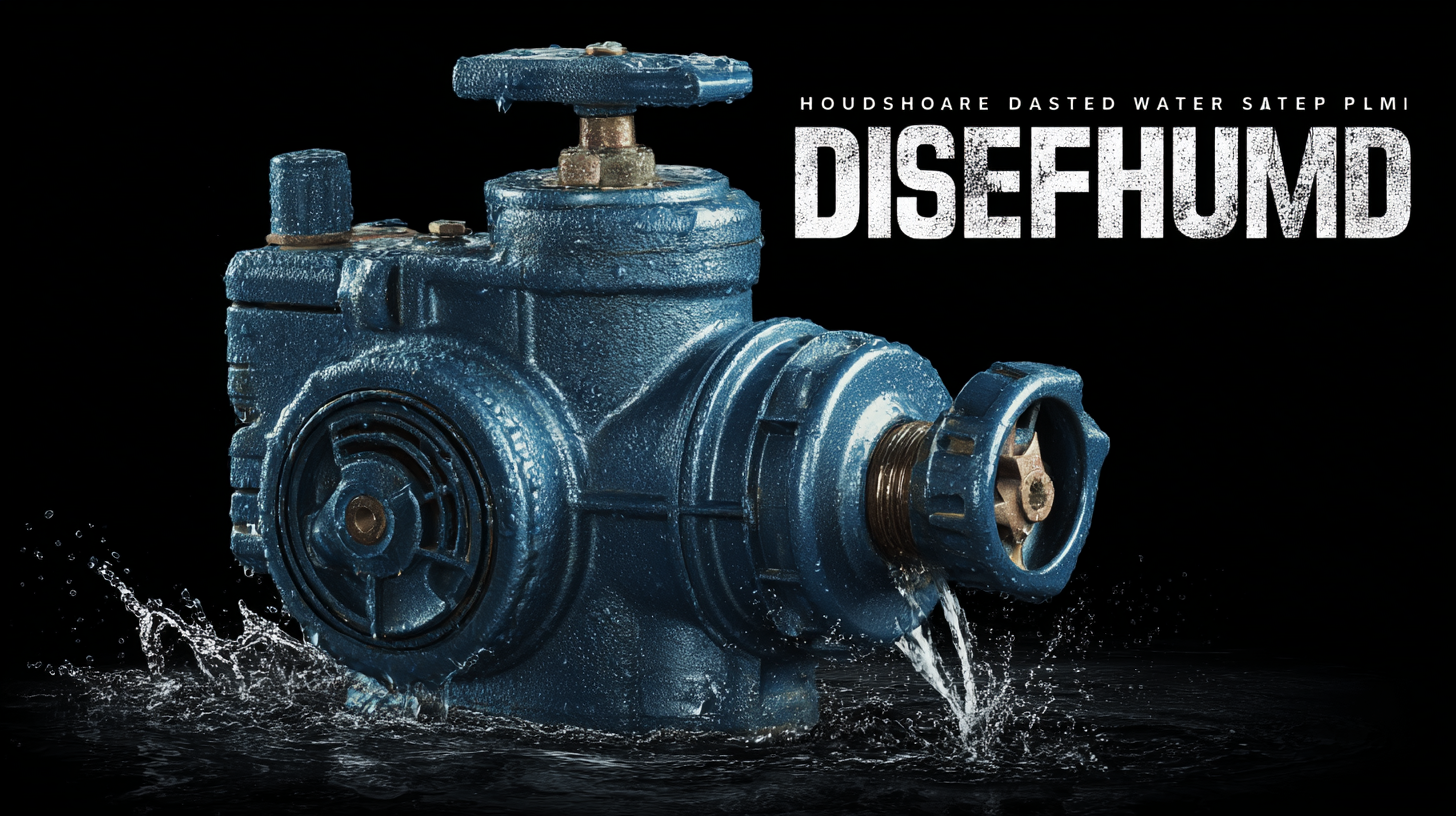
In today's rapidly evolving home improvement landscape, the household water pump has become an essential fixture for efficient water management, catering to various daily needs such as irrigation, emergency water removal, and boosting water pressure. According to the Global Water Pump Market Report, the household water pump segment is projected to grow significantly, driven by increasing demand for enhanced water supply and management systems. However, choosing the right specifications can often be challenging, as improper selection can lead to inefficiencies or even potential system failures. This blog aims to unlock the best household water pump specifications and provide expert insights on maximizing its performance, especially when faced with common problems such as inadequate flow rates or mechanical failures. Understanding these factors is crucial for homeowners looking to make informed decisions that not only enhance functionality but also ensure long-term reliability of their systems.

When considering household water pumps, understanding the essential specifications is crucial, particularly as we look ahead to 2025. According to a recent report by the Water Pump Manufacturers Association, the average household water pump now consumes approximately 1,200 watts, providing a flow rate of around 30 gallons per minute (GPM). These figures indicate a growing demand for energy-efficient models, emphasizing the importance of selecting pumps that comply with the latest Energy Star ratings. In 2025, it is expected that advancements in technology will further drive down energy consumption while enhancing performance, with many pumps likely to achieve efficiencies of over 80%.
Another vital specification to consider is the pump's maximum head, which denotes how high the water can be pumped. Current industry standards suggest that most household water pumps should offer a maximum head between 30 to 50 feet, allowing for versatility in various home designs. As noted in the International Water Association's 2023 report, incorporating smart technology and automatic controls could revolutionize household water management, providing homeowners with data-driven insights to optimize usage. As trends shift towards sustainability and efficiency, selecting the right specifications can ensure homeowners maximize both performance and cost savings in the coming years.
The water pump industry is witnessing significant advancements fueled by key trends that are reshaping technology and performance. One notable trend is the rising demand for efficient and sustainable pumping solutions. As industries such as oil and gas, water treatment, and food and beverage expand, the need for high-performance pumps that minimize energy consumption while maximizing output has become crucial. This shift is driving manufacturers to focus on developing innovative designs and materials that enhance durability and efficiency.
Additionally, the market for screw pumps is experiencing a robust growth trajectory, with a projected compound annual growth rate of 6.43% leading up to 2032. This growth is largely attributed to the diverse applications of screw pumps, which span across various sectors, including chemical processing and power generation. The versatility of screw pumps in handling different fluids and their ability to perform under challenging conditions make them increasingly preferred choices in industrial settings. As technology progresses, we can expect even greater efficiency and reliability from these pumps, setting new benchmarks in water management applications.

When selecting a household water pump, understanding the differences between submersible, centrifugal, and positive displacement pumps is crucial for optimizing performance. Submersible pumps are designed to be submerged in water, making them ideal for deep wells and applications requiring high head pressure. According to industry reports, these pumps can operate at depths of up to 400 feet and are highly efficient for residential water systems.
Centrifugal pumps, on the other hand, are widely favored for their ability to handle high flow rates. They function by converting rotational energy into hydrodynamic energy, ideal for applications like irrigation and draining pools. Data from the Hydraulic Institute indicates that centrifugal pumps can achieve efficiencies exceeding 85%, making them a popular choice for many households.
Tip: Always consider the power source when choosing a pump type; submersible pumps often require specialized electrical connections, while centrifugal pumps can be powered by gas engines or electricity.
Positive displacement pumps operate differently by trapping a fixed amount of water and forcing it out, making them suitable for applications that require consistent flow regardless of pressure variations. Their ability to generate higher pressures makes them useful in systems demanding precise delivery, though they tend to be more complex and often more expensive.
Tip: Regular maintenance is essential for all pump types, but especially for positive displacement pumps—cleaning filters and checking seals can significantly extend the pump's life.
When it comes to optimizing the efficiency of your household water pump, several best practices can make a significant difference. First and foremost, regular maintenance is key. This includes checking for leaks, ensuring that the pump is clear of debris, and replacing worn seals or filters as necessary. A well-maintained pump operates smoothly and can extend its lifespan, reducing the risk of costly repairs or replacements. Additionally, it’s essential to regularly assess your pump's performance to ensure it meets the demands of your household needs.
Another vital aspect of maximizing water pump efficiency is to match the pump size to your specific requirements. Oversized pumps can waste water and energy, while undersized pumps may struggle to cope with demand, leading to potential burnout. To achieve optimal performance, consider the flow rate and pressure requirements for your household, and consult with a professional if necessary. Furthermore, installing a variable speed drive can help adapt the pump’s operation according to fluctuating water usage patterns, enhancing efficiency while reducing energy consumption. Implementing these practices will not only improve your water pump's performance but also contribute to significant savings on your utility bills.

The household water pump market is poised for significant growth, with a projected value of $18.58 billion in 2024, escalating to $26.92 billion by 2032, marking a compound annual growth rate (CAGR) of 4.8%. This upward trend emphasizes the critical need for innovative designs that enhance efficiency and sustainability in water pump technology. As manufacturers increasingly focus on reducing the environmental impact of their products, future innovations are expected to feature improved energy efficiency and minimized carbon footprints, helping to meet growing consumer demands for eco-friendly solutions.
In parallel with these advancements in household applications, the industrial water pump sector is also witnessing a remarkable surge, with projections indicating market expansion to $4.483 billion by 2032. Key segments, such as centrifugal and reciprocating pumps, are driving this growth, particularly in industries like oil and gas, chemicals, and wastewater treatment. The ongoing emphasis on sustainable practices not only enhances operational performance but also aligns with global efforts in reducing greenhouse gas emissions. As experts assert, adopting sustainable technologies in water pump design is vital for addressing the environmental challenges posed by increased industrial activity.
| Specification | Standard Units | Typical Values | Remarks |
|---|---|---|---|
| Flow Rate | GPM (Gallons per Minute) | 10 - 30 | Varies based on application |
| Lift Height | Feet | 20 - 50 | Determines maximum height water can be pumped |
| Power Consumption | HP (Horsepower) | 0.5 - 3 | Lower HP indicates higher efficiency |
| Pump Type | - | Submersible / Centrifugal | Submersible pumps are more efficient for deep water sources |
| Material | - | Stainless Steel / Thermoplastic | Durability and corrosiveness depend on the material |
| Noise Level | dB (Decibels) | 50 - 70 | Choose pumps with lower decibel ratings for quieter operation |
TradeManager
Skype
VKontakte
